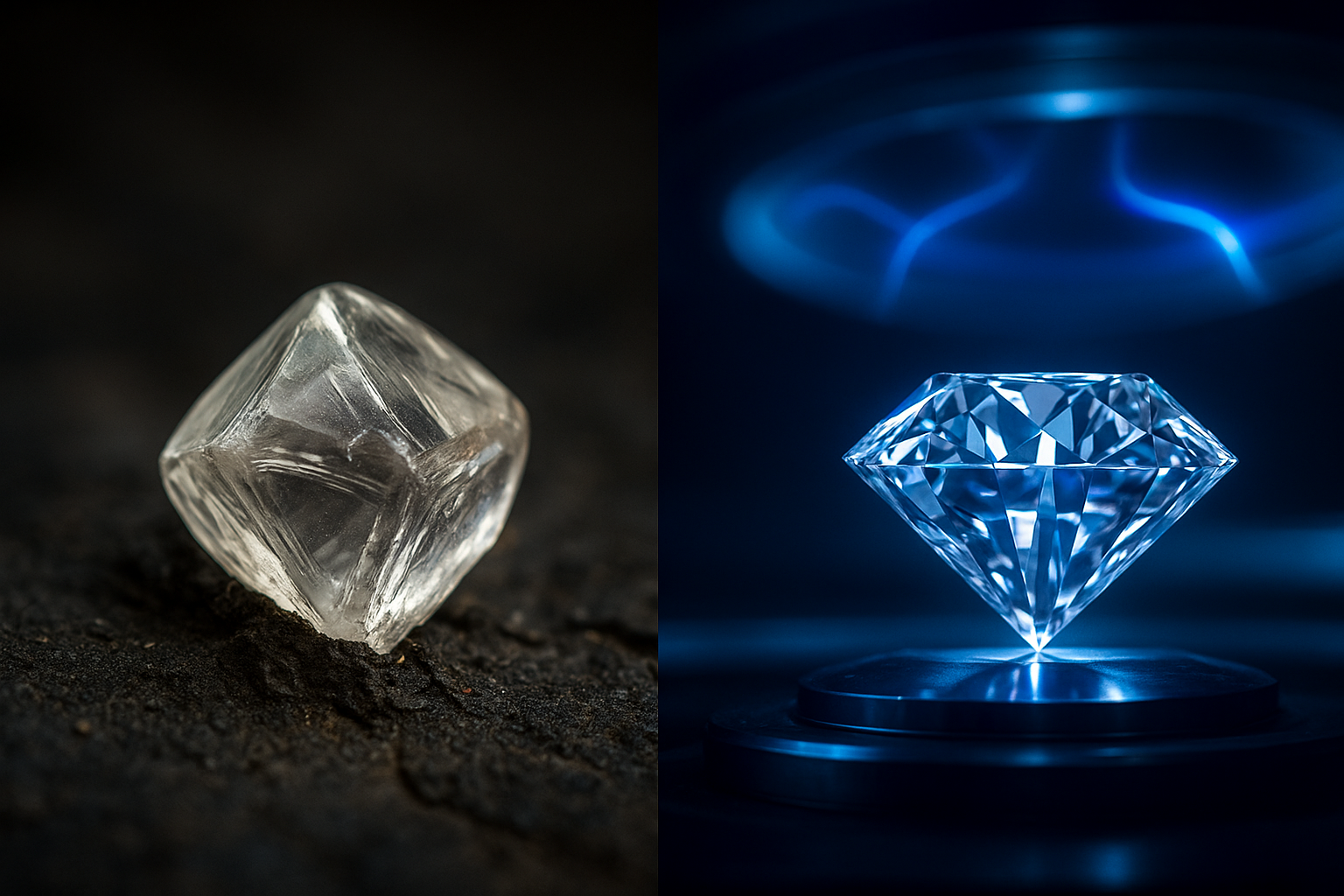C | Chemically
Natural: Formed deep within the earth over billions of years; trace elements like nitrogen or boron create natural hues.
Lab-Grown: Created in a factory in weeks; metallic flux or hydrocarbon gases often leave tell‑tale impurities and growth residues.
O | Optically
Natural: Exhibit earth‑grown spectral and absorption signatures (N3, H3, GR1 lines) plus unique strain/fluorescence patterns that advanced instruments can verify.
Lab-Grown: Show distinct fingerprints—HPHT displays nickel‑related peaks, CVD features silicon‑vacancy lines; these contrasting spectral/absorption signatures, along with curved growth or color zoning, let experts separate them instantly.
P | Physically
Natural: Cubic crystal lattice with identifiable strain; resists chipping differently along growth planes.
Lab-Grown: CVD stones often exhibit strain‑induced birefringence (cross‑hatched interference colors), while HPHT stones can display pronounced color zoning—physical markers of rapid, controlled growth conditions.
P | Phosphorescence
Natural: Rare; only certain Type IIb diamonds show faint blue after‑glow.
Lab-Grown: HPHT stones routinely glow neon blue or orange after UV exposure—a giveaway to laboratories and trained gemologists.
E | Enhancements
Natural: Treatments are disclosed, tracked, and typically limited to color or clarity adjustments; permanent value still linked to origin.
Lab-Grown: Stones are routinely re‑subjected to HPHT/heat treatment after growth to brighten or shift color—typically chasing D–F grades. If these high‑temperature/pressure cycles are mis‑calibrated they can induce micro‑cracking, graphitisation, or surface etching that compromises long‑term durability. Manufacturers may also laser‑fill fractures. Disclosure and quality control vary widely by factory.
R | Real (Authenticity & Rarity — FTC Definition)
Natural: Legally recognized by the FTC and global trade bodies as real diamonds—formed in the earth over billions of years and statistically rarer than a star in the night sky.
Lab-Grown: Under the FTC Jewelry Guides—16 CFR § 23.27, “Misuse of the words ‘real,’ ‘genuine,’ ‘natural,’ ‘precious,’ etc.”—“It is unfair or deceptive to use the word ‘real,’ ‘genuine,’ ‘natural,’ ‘precious,’ ‘semi-precious,’ or similar terms to describe any industry product that is manufactured or produced artificially.”
Therefore laboratory-grown diamonds must be clearly described as “laboratory-grown,” “laboratory-created,” or “man-made.” Because factories can scale production indefinitely, rarity—and long-term value—is not inherent.
Why It Matters
- Investment: Natural diamonds have a century-long track record of holding value.
- Romance: The story of earth-born creation resonates with milestone moments.
- Legacy: Heirloom pieces gain sentimental and financial worth over generations.
Diamond Cutters International
4265 San Felipe St., Suite 960
Houston, TX 77027
☎ 713-222-2728
www.diamondcuttersintl.com
